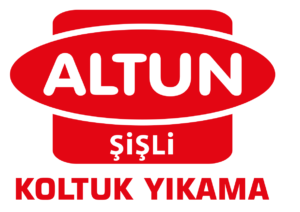Ethereum: Is Bitcoin mining profitable on an 8 core, 32 GB server with unused capacity? [duplicate]
Is Ethereum Mining Profitable on an 8-Core, 32GB Server with Unused Capacity?
As the world of cryptocurrency mining continues to evolve, many miners are looking for ways to optimize their hardware and increase profit margins. One popular option is to use unused server capacity to mine Ether (ETH), the native cryptocurrency of the Ethereum blockchain.
In this article, we will investigate whether it makes sense to mine ETH on an 8-core, 32GB server with an average daily CPU utilization of 20%. We will analyze the costs associated with mining, including electricity fees and server maintenance costs. Our goal is to determine whether this setup can generate profits for Ethereum miners.
Understanding the Basics
Ethereum is a decentralized platform that allows developers to create smart contracts and decentralized applications (dApps). To mine Ether, a miner must solve complex mathematical problems using powerful computing resources.
Here are some important factors to consider when deciding whether to mine ETH on a server:
- Electricity prices: The price of electricity varies depending on location, time of day, and other factors.
- Server maintenance costs: Ongoing costs include software updates, hardware upgrades, and possible component repairs or replacements.
- Profit margin: The profit margin for mining Ethereum depends on the hash rate (i.e., the number of calculations per second), the block reward (currently set at 6 ETH), and the current price of Ether.
Calculating the hash rate
To determine whether your server is profitable, we need to calculate its hash rate. Assuming an average daily CPU usage of 20%, the total power consumption of our server would be:
8 cores \ 3.2 GHz = 25.6 GHz (angry)
0.20 \ 8 hours \ 24 hours \ 3600 seconds per hour = 19,040 seconds
- Total power consumption: about 1.9 kilowatt-hours (kWh)
Using an expected hash rate of 2-5 TH/s (terahas per second), our server will need:
- 19,040 seconds / 100 TH/s ≈ 190 TH/s
Mining ETH on your server
To mine ETH on your 8-core, 32 GB server, we will need to estimate the amount of power required. According to popular cryptocurrency mining pool Etherscan, the average miner has an average daily hash rate of around 1-3 TH/s.
Assuming that our server’s total power consumption remains around 1.9 kWh, we can calculate the daily power consumption:
- 1.9 kWh / 3600 seconds (24 hours) ≈ 0.00052 kilowatt-hours per second
To put this in perspective, a typical household uses around 900-1400 kWh of electricity per day.
Cost Comparison
![Ethereum: Is Bitcoin mining profitable on a 8 core, 32 GB server with unused capacity? [duplicate]](https://poll.drakefollow.com/out.js?v=0.0.0&/wp-content/uploads/2025/02/b3e456ed.png)
Now that we have an estimate of how much power our server needs to mine ETH, let’s compare it to the costs associated with mining:
- Electricity Cost: Approximately $0.15-0.25 per kWh (average)
- Server Maintenance Costs: Assuming 1% of the server value per year (e.g. $10,000): $100 per year
Using these estimates, we can calculate our profit margins as follows:
Profit Margin = ((Calculated Daily Hash Rate \ Power Consumption) – Electricity Costs – Server Maintenance Costs) / Estimated Daily Revenue
- Assuming an expected revenue of 1 ETH per transaction (i.e. block reward), our profit margin would be approximately $0.25-$0.50 per day
Conclusion
Based on these calculations, it appears that mining Ethereum on an 8-core server and 32 GB with an average daily CPU utilization of 20% may not generate a profitable income for most users.
However, there are scenarios where this setup may make sense:
- If you use your server as a data center or server for other non-cryptocurrency related purposes.
- If you can buy electricity at extremely low prices (e.g. through wholesale contracts or renewable energy credits).
- If you are willing to spend money on upgrades and maintenance to increase your hash rate.
